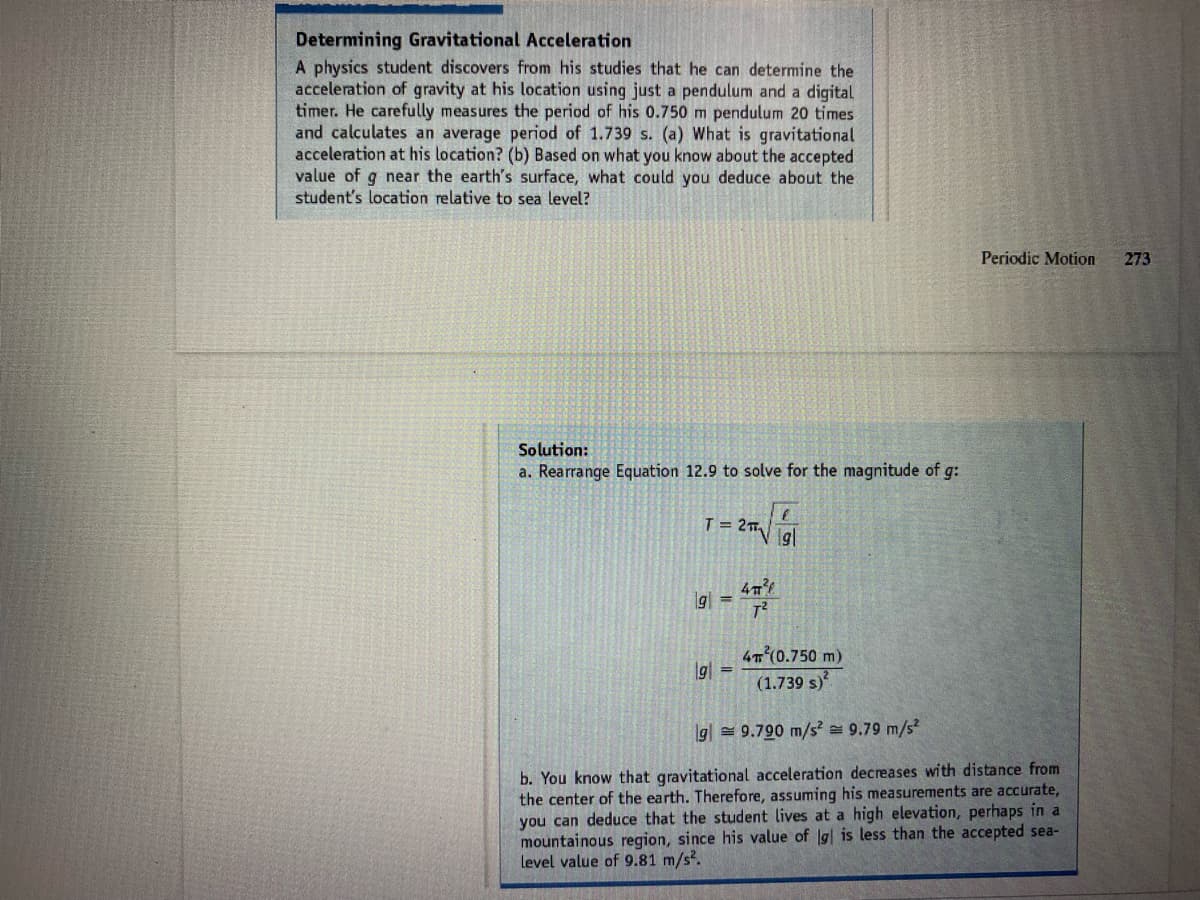What is the magnitude of the acceleration of gravity on a planet where a space explorer's 50.0 cm long pendulum oscillates 120. cycles in 280. s?
Simple harmonic motion
Simple harmonic motion is a type of periodic motion in which an object undergoes oscillatory motion. The restoring force exerted by the object exhibiting SHM is proportional to the displacement from the equilibrium position. The force is directed towards the mean position. We see many examples of SHM around us, common ones are the motion of a pendulum, spring and vibration of strings in musical instruments, and so on.
Simple Pendulum
A simple pendulum comprises a heavy mass (called bob) attached to one end of the weightless and flexible string.
Oscillation
In Physics, oscillation means a repetitive motion that happens in a variation with respect to time. There is usually a central value, where the object would be at rest. Additionally, there are two or more positions between which the repetitive motion takes place. In mathematics, oscillations can also be described as vibrations. The most common examples of oscillation that is seen in daily lives include the alternating current (AC) or the motion of a moving pendulum.

![EXAMPLE 12-5
Analyzing Waves
Figure 12-27a shows a wave graph, and Figure 12-27b shows a vibration
graph for the same wave. Find the wave's (a) amplitude (A), (b) wavelength
(A), (c) frequency (f). (d) period (T), and (e) speed (v).
Solution:
a. Amplitude:
A = 2(dpeak - duough) = [(+10 cm)-(-10 cm)]
A = 10 cm
%3D
b. Wavelength: A = 20 cm (from Figure 12-27a)
c. Frequency:
f%3D
n cycles 1 cycle
At
2s
(from Figure 12-27b)
%3D
f = 0.5 s
d. Period:
T= 1/f=
0.5 s
%3D
T 2 s
e. Speed:
v = Af (0.2 m)(0.5 s)
v 0.1 m/s](/v2/_next/image?url=https%3A%2F%2Fcontent.bartleby.com%2Fqna-images%2Fquestion%2F4846c71a-ac20-4d52-b8be-c62a1903719a%2Fbbd4efd0-4bd6-40ea-bbef-47d05fa5e03a%2Fepk2rtg_processed.jpeg&w=3840&q=75)
Trending now
This is a popular solution!
Step by step
Solved in 2 steps with 2 images









